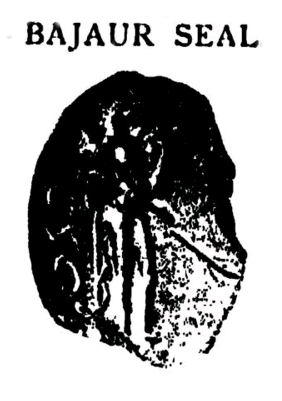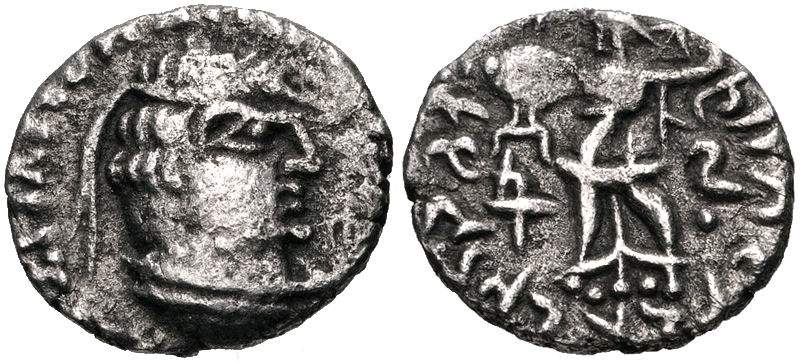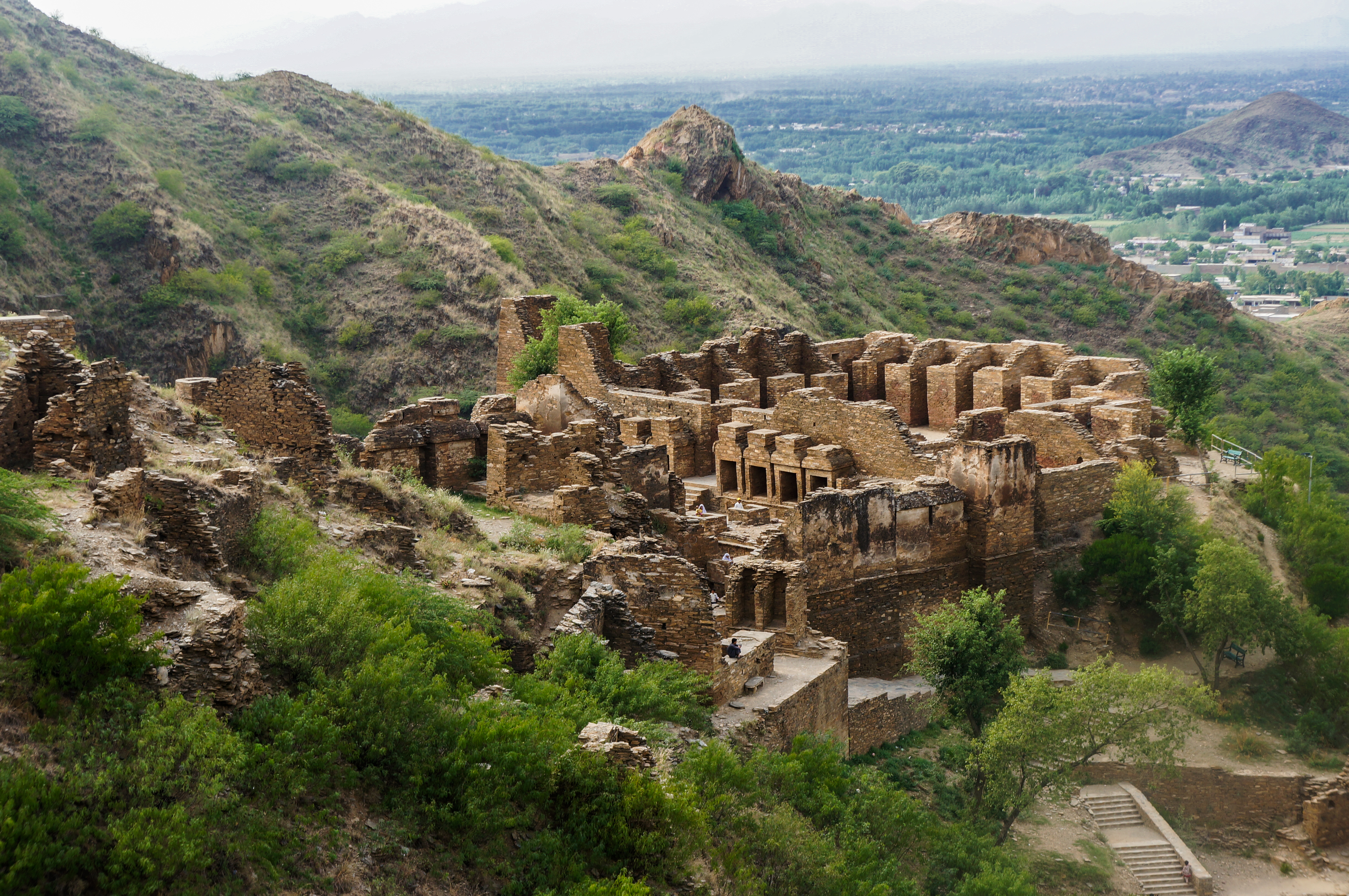|
Theodamas
Theodamas ( ''fl.'' 1st century) seems to have been an Indo-Greek ruler in the Bajaur area of Gandhara, in modern Pakistan. No coins of him are known, but he has left a signet bearing his name in kharoshthi script, which was found in the region of Bajaur. Description The inscription on the Seal is "Su Theodamasa", ''Su'' being explained as the ubiquitous Kushan royal title ''Shau'' ("Shah", "King"), a title which also appeared in its Greek version in the 1st century posthumous issues of the coins of Hermaeus minted by Kujula Kadphises. On these coins the obverse in Greek is Βασιλεος Στιρος Συ Ερμαιοι—''Basileos Stiros Su Ermaioi'', "Saviour King, Shah Hermaeus", which is translated on the reverse in Kharoshthi as ''Maharajasa Rajarajasa Mahatasa Heramayasa'', "The Great King, the King of Kings, the Great Hermaeus". Although after 50 BCE Indo-Greek rulers were replaced by the Indo-Scythians and then the Indo-Parthians, Greek culture was maintained t ... [...More Info...] [...Related Items...] OR: [Wikipedia] [Google] [Baidu] |
Indo-Greek Kings
The Indo-Greek Kingdom, or Graeco-Indian Kingdom, also known historically as the Yavana Kingdom (Yavanarajya), was a Hellenistic-era Greek kingdom covering various parts of Afghanistan and the northwestern regions of the Indian subcontinent (parts of modern-day Pakistan and northwestern India). This kingdom was in existence from ca. 200 BC to ca. 1 BC. During its existence the kingdom was ruled over by 30 successive kings. Menander I, being the most well known amongst the Indo-Greek kings, is often referred to simply as ''“Menander,”'' despite the fact that there was indeed another Indo-Greek King known as Menander II. Menander I's capital was at Sagala in the Punjab (present-day Sialkot). The kingdom was founded when the Graeco-Bactrian king Demetrius (and later Eucratides) invaded India from Bactria in 200 BC. The Greeks in the Indian Subcontinent were eventually divided from the Graeco-Bactrians centered on Bactria (now the border between Afghanistan and Uzbekistan ... [...More Info...] [...Related Items...] OR: [Wikipedia] [Google] [Baidu] |
Indo-Greek
The Indo-Greek Kingdom, or Graeco-Indian Kingdom, also known historically as the Yavana Kingdom (Yavanarajya), was a Hellenistic-era Greek kingdom covering various parts of Afghanistan and the northwestern regions of the Indian subcontinent (parts of modern-day Pakistan and northwestern India). This kingdom was in existence from ca. 200 BC to ca. 1 BC. During its existence the kingdom was ruled over by 30 successive kings. Menander I, being the most well known amongst the Indo-Greek kings, is often referred to simply as ''“Menander,”'' despite the fact that there was indeed another Indo-Greek King known as Menander II. Menander I's capital was at Sagala in the Punjab (present-day Sialkot). The kingdom was founded when the Graeco-Bactrian king Demetrius (and later Eucratides) invaded India from Bactria in 200 BC. The Greeks in the Indian Subcontinent were eventually divided from the Graeco-Bactrians centered on Bactria (now the border between Afghanistan and Uzbe ... [...More Info...] [...Related Items...] OR: [Wikipedia] [Google] [Baidu] |
Greco-Bactrian Kingdom
The Bactrian Kingdom, known to historians as the Greco-Bactrian Kingdom or simply Greco-Bactria, was a Hellenistic-era Greek state, and along with the Indo-Greek Kingdom, the easternmost part of the Hellenistic world in Central Asia and the Indian Subcontinent from its founding in 256 BC by Diodotus I Soter to its fall BC under the reign of Heliocles I. It covered much of present-day Afghanistan, Uzbekistan, Tajikistan and Turkmenistan, and at its zenith, parts of Iran and Pakistan. An extension further east with military campaigns may have reached central Gansu province in China. Bactria was ruled by the Diodotid dynasty and rival Euthydemid dynasty. The capitals of Ai-Khanum and Bactra were among the largest and richest of antiquity - Bactria itself was known as the ‘''land of a thousand golden cities’''. The Indo-Greek Kingdoms, as Bactrian successor states, would last until 10 AD. History Independence and Diodotid dynasty Diodotus, the satrap of Bactria (and pro ... [...More Info...] [...Related Items...] OR: [Wikipedia] [Google] [Baidu] |
Indo-Parthians
The Indo-Parthian Kingdom was a Parthian kingdom founded by Gondophares, and active from 19 CE to c. 226 CE. At their zenith, they ruled an area covering parts of eastern Iran, various parts of Afghanistan and the northwest regions of the Indian subcontinent (most of modern Pakistan and parts of northwestern India). The rulers may have been members of the House of Suren, and the kingdom has even been called the "Suren Kingdom" by some authors. The kingdom was founded in 19 when the governor of Drangiana (Sakastan) Gondophares declared independence from the Parthian Empire. He would later make expeditions to the east, conquering territory from the Indo-Scythians and Indo-Greeks, thus transforming his kingdom into an empire. The domains of the Indo-Parthians were greatly reduced following the invasions of the Kushans in the second half of the 1st. century. They managed to retain control of Sakastan, until its conquest by the Sasanian Empire in c. 224/5. In Baluchistan, the ... [...More Info...] [...Related Items...] OR: [Wikipedia] [Google] [Baidu] |
Strato III
Strato III Philopator ( el, Στράτων Γ΄ Φιλοπάτωρ; epither means "the Father-loving") was an Indo-Greek king who ruled c. 25 BCE to 10 CE. He is only known through the joint coins with his father Strato II. He may have been supplanted, in conjunction with his father or later as an independent king, by the Indo-Scythian Northern Satraps, particularly Rajuvula and Bhadayasa, whose coins were often copied. Strato was the last of the line of Diodotus and independent Hellenistic king to rule at his death in 10 AD.The Dynastic Arts of the Kushans, John M. Rosenfield, University of California Press, 1967, p.13/ref> Coinage Strato III may also have issued coins on his own, but these are rare and unconfirmed. A few silver coins with a different portrait and the inscription Strato Soter ''Dikaios'' ("the just") may also belong to Strato III as sole ruler, or to a fourth king named Strato.Senior, ibid. Just like the earlier king Strato I, Strato III is thought to belon ... [...More Info...] [...Related Items...] OR: [Wikipedia] [Google] [Baidu] |
Kushan Empire
The Kushan Empire ( grc, Βασιλεία Κοσσανῶν; xbc, Κυϸανο, ; sa, कुषाण वंश; Brahmi: , '; BHS: ; xpr, 𐭊𐭅𐭔𐭍 𐭇𐭔𐭕𐭓, ; zh, 貴霜 ) was a syncretic empire, formed by the Yuezhi, in the Bactrian territories in the early 1st century. It spread to encompass much of modern-day territory of, Afghanistan, Pakistan, Uzbekistan, and northern India, at least as far as Saketa and Sarnath near Varanasi (Benares), where inscriptions have been found dating to the era of the Kushan Emperor Kanishka the Great. The Kushans were most probably one of five branches of the Yuezhi confederation, an Indo-European nomadic people of possible Tocharian origin, who migrated from northwestern China (Xinjiang and Gansu) and settled in ancient Bactria. The founder of the dynasty, Kujula Kadphises, followed Greek religious ideas and iconography after the Greco-Bactrian tradition, and being a follower of Shaivism. The Kushans in general ... [...More Info...] [...Related Items...] OR: [Wikipedia] [Google] [Baidu] |
Indo-Parthian Kingdom
The Indo-Parthian Kingdom was a Parthian kingdom founded by Gondophares, and active from 19 CE to c. 226 CE. At their zenith, they ruled an area covering parts of eastern Iran, various parts of Afghanistan and the northwest regions of the Indian subcontinent (most of modern Pakistan and parts of northwestern India). The rulers may have been members of the House of Suren, and the kingdom has even been called the "Suren Kingdom" by some authors. The kingdom was founded in 19 when the governor of Drangiana (Sakastan) Gondophares declared independence from the Parthian Empire. He would later make expeditions to the east, conquering territory from the Indo-Scythians and Indo-Greeks, thus transforming his kingdom into an empire. The domains of the Indo-Parthians were greatly reduced following the invasions of the Kushans in the second half of the 1st. century. They managed to retain control of Sakastan, until its conquest by the Sasanian Empire in c. 224/5. In Baluchistan, the Parat ... [...More Info...] [...Related Items...] OR: [Wikipedia] [Google] [Baidu] |
Greco-Buddhism
Greco-Buddhism, or Graeco-Buddhism, is the cultural syncretism between Hellenistic culture and Buddhism, which developed between the fourth century BC and the fifth century AD in Gandhara, in present-day north-western Pakistan and parts of north-east Afghanistan. It was a cultural consequence of a long chain of interactions begun by Greek forays into India from the time of Alexander the Great. A few years after Alexander's death, the Easternmost fringes of the empire of his general Seleucus were lost in a war with the Mauryan Empire, under the reign of Chandragupta Maurya. The Mauryan Emperor Ashoka would convert to Buddhism and spread the religious philosophy throughout his domain, as recorded in the Edicts of Ashoka. This spread to the Greco-Bactrian kingdom, which itself seceded from the Seleucid empire. Within its borders, the Greek fondness for statuary produced the first statues of the Buddha, leading ultimately to the modern tradition. Following the collapse of the Mau ... [...More Info...] [...Related Items...] OR: [Wikipedia] [Google] [Baidu] |
Seleucid Empire
The Seleucid Empire (; grc, Βασιλεία τῶν Σελευκιδῶν, ''Basileía tōn Seleukidōn'') was a Greek state in West Asia that existed during the Hellenistic period from 312 BC to 63 BC. The Seleucid Empire was founded by the Macedonian general Seleucus I Nicator, following the division of the Macedonian Empire originally founded by Alexander the Great. After receiving the Mesopotamian region of Babylonia in 321 BC, Seleucus I began expanding his dominions to include the Near Eastern territories that encompass modern-day Iraq, Iran, Afghanistan, Syria, all of which had been under Macedonian control after the fall of the former Persian Achaemenid Empire. At the Seleucid Empire's height, it had consisted of territory that had covered Anatolia, Persia, the Levant, and what are now modern Iraq, Kuwait, Afghanistan, and parts of Turkmenistan. The Seleucid Empire was a major center of Hellenistic culture. Greek customs and language were privileged; the wide va ... [...More Info...] [...Related Items...] OR: [Wikipedia] [Google] [Baidu] |
Greco-Buddhist Art
The Greco-Buddhist art or Gandhara art of the north Indian subcontinent is the artistic manifestation of Greco-Buddhism, a cultural syncretism between Ancient Greek art and Buddhism. It had mainly evolved in the ancient region of Gandhara. The series of interactions leading to Gandhara art occurred over time, beginning with Alexander the Great's brief incursion into the area, followed by the Mauryan Emperor Ashoka converting the region to Buddhism. Buddhism became the prominent religion in the Indo-Greek Kingdoms. However, Greco-Buddhist art truly flowered and spread under the Kushan Empire, when the first surviving devotional images of the Buddha were created during the 1st-3rd centuries CE. Gandhara art reached its zenith from the 3rd-5th century CE, when most surviving motifs and artworks were produced. Gandhara art is characterized by Buddhist subject matter, sometimes adapting Greco-Roman elements, rendered in a style and forms that are heavily influenced by Greco-Roman ... [...More Info...] [...Related Items...] OR: [Wikipedia] [Google] [Baidu] |
Bajaur Seal
Bajaur District ( ps, باجوړ ولسوالۍ, ur, ) is a district in Malakand Division of Khyber Pakhtunkhwa province in Pakistan. Until 2018, it was an agency of the Federally Administered Tribal Areas, then during restructuring that merged FATA with Khyber Pakhtunkhwa, it became a district. According to the 2017 census, the population of the district is 1,093,684. It borders Afghanistan's Kunar Province with a 52 km border. The headquarters of the agency administration is located in the town of Khar. Geography Bajaur is about long by broad. It lies at a high elevation to the east of the Kunar Valley of Afghanistan and Pakistan, from which it is separated by a continuous line of rugged frontier hills, forming a barrier that is easily passable at one or two points. The old road from Kabul to Pakistan ran through the barrier before the Khyber Pass was adopted as the main route. Nawagai is the chief town of Bajour; the Khan of Nawagai was previously under British pro ... [...More Info...] [...Related Items...] OR: [Wikipedia] [Google] [Baidu] |
Indo-Scythians
Indo-Scythians (also called Indo-Sakas) were a group of nomadic Iranian peoples of Scythian origin who migrated from Central Asia southward into modern day Pakistan and Northwestern India from the middle of the 2nd century BCE to the 4th century CE. The first Saka king of India was Maues/Moga (1st century BCE) who established Saka power in Gandhara, Pakistan and the Indus Valley. The Indo-Scythians extended their supremacy over north-western India, conquering the Indo-Greeks and other local kingdoms. The Indo-Scythians were apparently subjugated by the Kushan Empire, by either Kujula Kadphises or Kanishka. Yet the Saka continued to govern as satrapies, forming the Northern Satraps and Western Satraps. The power of the Saka rulers started to decline in the 2nd century CE after the Indo-Scythians were defeated by the Satavahana emperor Gautamiputra Satakarni. Indo-Scythian rule in the northwestern Indian subcontinent ceased when the last Western Satrap Rudrasimha III wa ... [...More Info...] [...Related Items...] OR: [Wikipedia] [Google] [Baidu] |







.jpeg/1200px-Gandhara_Buddha_(tnm).jpeg)


